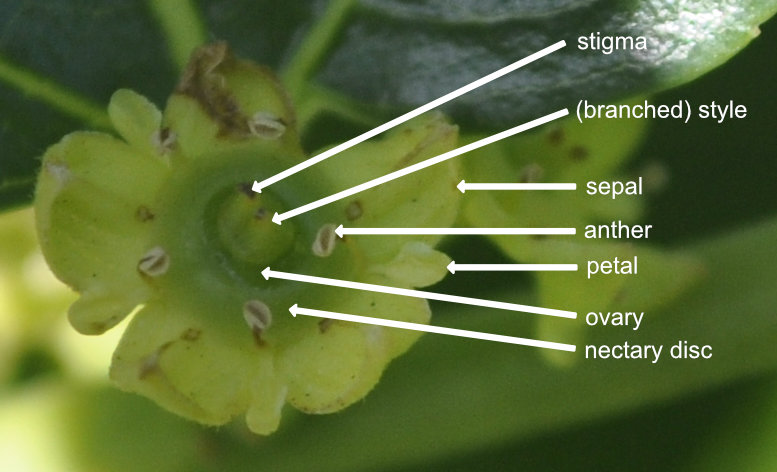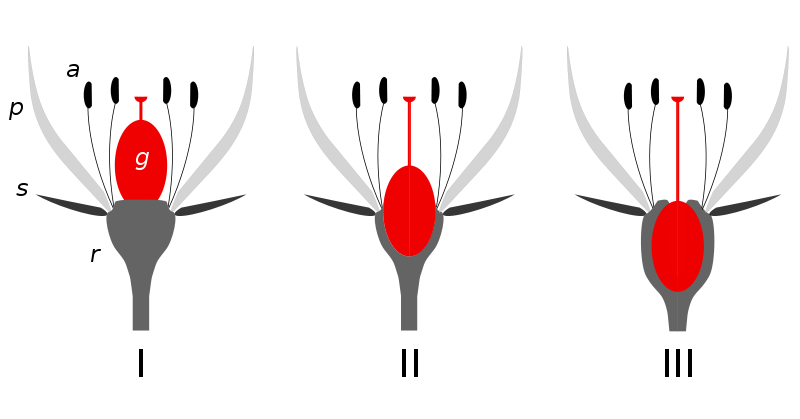Jujube Fruit Anatomy
What is a Fruit?
A fruit, botanically speaking, is the seed-bearing structure which develops from the ovary of a flowering plant. Last week was a brief introduction to the diverse categories of fruits that exist — with maybe a few surprising revelations of berries which aren’t really berries, nuts which are really seeds, and seeds which are really fruits!
This post is specifically about the jujube fruit.
Jujube Fruit Classification
The jujube fruit arises from a single ovary, is fleshy with a thin fleshy skin, and contains a hard central ’stone’, or ‘pit’ (the botanical term for this stone is pyrene). This pyrene is not the seed, but a hard structure containing the seeds, and in the case of jujubes will have two seeds. The fruit is indehiscent, in that it doesn’t split open on maturity to release the seeds.
Al these characteristics classify a jujube fruit as a drupe.
The Flower Ovary
This overview of a typical flower’s anatomy along with this Encyclopaedia Britannica diagram on the plant ovary specifically will hopefully make the following easier to follow.
The photo below is from Photo Journal: Anatomy of a Jujube Flower, and shows the location of the single ovary in a jujube flower:

© Optimate Group Pty Ltd
The jujube ovary is a superior ovary, in that it sits above the receptacle (the thickened part of a stem from which a flower grows). (Fun fact: it is the receptacle of a strawberry that develops into the edible ‘fruit’ part — the little ’seeds’ on its exterior are the real fruits, each an ovary containing a real seed!)
The following stylised diagram illustrates this superior position, along with the two other ovary types of half-inferior and inferior:

a androecium (male stamens); g gynoecium (female pistils); p petals; s sepals; r receptacle
Attribution: Ulf Mehlig, CC BY-SA 2.5 , via Wikimedia Commons
Drupes typically develop from flowers with a superior ovary.
The photo below is of three Chico fruits at different stages of development, as shown by the enlargening ovary when moving anti-clockwise from the youngest at the top left to the oldest immediately to its right:

© Optimate Group Pty Ltd
Here is a very young Shanxi-Li fruit dissected to reveal a cross-section of the maturing ovary:

© Optimate Group Pty Ltd
Let’s explore this anatomy further!
Anatomy of a Fruit in General, and a Drupe Specifically
All fruits are comprised of two main parts, the seed(s) and the pericarp.
The seed is made of a seed coat, which contains the embryo (fertilised egg) and a food source (the endosperm) to sustain the embryo during germination.
The pericarp develops from the ovary wall, and is the surrounding tissue which protects the seed(s). It is made of three layers: the inner endocarp, the middle mesocarp, and the outer exocarp (also called the epicarp). These layers are not distinguishable in dry fruits, but are very clear in the fleshy fruits.
How the pericarp develops in the fleshy fruits depends on the fruit type, and in a drupe, the endocarp forms the hard seed-containing stone, the mesocarp becomes the fleshy edible ‘fruit’ part, and the exocarp develops into a thin edible skin.
The illustration below is of a peach — also a drupe — and shows the typical anatomy and distinct layers of the pericarp in this fruit type:

Attribution: LadyofHats, Public domain, via Wikimedia Commons
Anatomy of a Jujube
The photo below is the same jujube fruit as above, but with its anatomical components labelled:

© Optimate Group Pty Ltd
With time the two embryos will develop into two seeds — or one or none if either or both fail. The endocarp will continue to harden and thicken into a very tough stone regardless of the embryos’ development, and it is not unusual to crack open a jujube stone (with difficulty!) to find anything from nothing, to two plump seeds, with all variations in between! The stone is very similar to an olive’s, in size, colour, and with the same distinct pointy-edged ovoid shape.
The mesocarp, green in the above photo, will continue to enlarge and lighten, then gradually sweeten and change colour from a fresh apple-like whitish texture to a more chewy red-brown date-like texture as it continues to ripen, lose moisture and dries. The surrounding exocarp will lighten to a yellow-green colour as the fruit ripens to fresh-eating stage, then takes on a red-brown date-like texture as it ripens further to the dried-eating stage.
About the Author
BSc(Hons), U.Syd. - double major in biochemistry and microbiology, with honours in microbiology
PhD, U.Syd - soil microbiology
Stumbled into IT and publishing of all things.
Discovered jujube trees and realised that perhaps I should have been an agronomist...
So I combined all the above passions and interests into this website and its blog and manuals, on which I write about botany, soil chemistry, soil microbiology and biochemistry - and yes, jujubes too!
Please help me buy a plant if you found this article interesting or useful!
2 comments
Comment from: adrian_van_leest Member
Comment from: kristi Member

That is one amazing recovery Adrian, that tree sure is a fighter! And it sounds like it has presented you with the perfect opportunity to later prune it into the classic open vase shape too — vicissitudes indeed!
Kristi. Last year I had a magnificent burst of growth comprised of a single main stem to 1.8 metres, 16 lateral branches and multiple branchlets with flowers. But by the time it had grown to that stage it was late in the season and neither the fruit nor the main stem were mature enough to eat or survive the Canberra winter. An orange brown fungus-like lesion throttled (ring barked) the main stem at about 40 cm, and every bit of young growth above it died. I had to prune the tree below the rot and sprayed the remaining tree with Yates Anti-Rot as prescribed.. This spring six new main stems sprouted, growing furiously with all the usual lateral branches and branchlets. The floiwer buds are just becoming visible - I am hoping that as they are at least a month earlier than last year they will mature as true Chico fruit, but the resultant shrub (not tree this time) now has multiple arms fighting each other for verticle space. At least I won’t have to reach high for the fruit in Autumn. Oh, the fun of Jujube vicissitudes!!!